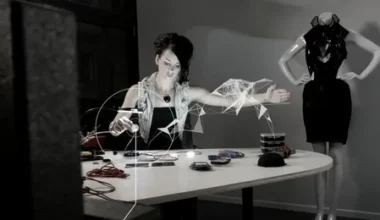Every area can be used as a canvas for creativity, utility, and individual expression when it comes to interior design. The skill of interior design turns ordinary spaces—from cramped offices to comfortable homes—into expressions of uniqueness and flair. This article delves into the interior decoration industry, examining its dynamics, obstacles, and essential components that lead to its prosperity.
Understanding the Interior Decoration Business
Curating experiences is the core of interior décor, which goes beyond simple color schemes and furniture placement. The subtleties of space dynamics, client preferences, and design aesthetics are all understood by a successful interior decoration company. The goal is to create spaces that are harmonious and meet the demands of the occupants while still being functional.
Crucial Components of Achievement
Creativity and Innovation
A creative spark is the foundation of each successful interior design company. Innovation is what distinguishes leaders in the field, whether they are reinventing conventional settings or launching novel design fads. Providing clients with state-of-the-art solutions requires being up to date on the newest design technology and materials.
Client Collaboration
In the interior design industry, collaboration and effective communication are critical. Delivering specialized solutions that surpass expectations requires a thorough understanding of the client’s goals, way of life, and financial restrictions. Developing solid bonds with clients guarantees their happiness and builds trust, which encourages repeat business and referrals.
Attention to Detail
As they say, the devil is in the details. Exceptional interior decorators pay close attention to every detail of the design process, from conception to execution. It’s about striking a balance between style and utility, making sure each component fulfills a role and elevates the atmosphere as a whole.
Adaptability and Flexibility
The design environment is always changing due to shifting client preferences, trends, and technologies. Robust interior design companies keep flexible, modifying their approaches and products to remain competitive in a changing market. Professionals who embrace adaptability and open-mindedness can confidently take on a variety of tasks.
Quality Craftsmanship
Fine craftsmanship, found in everything from handcrafted furniture to custom-built fixtures, is the foundation of outstanding interior design. Assuring the finished product’s longevity, sustainability, and aesthetic appeal requires collaborating with knowledgeable craftspeople and reliable suppliers. Superior craftsmanship is an investment that benefits customer satisfaction and brand reputation.
Challenges in the Interior Decoration Business
- Budget Constraints
For interior decorators, striking a balance between cost constraints and design goals is an ongoing problem. Cunning and strategic planning are needed to find innovative solutions that provide value without sacrificing quality.
- Market Saturation
Differentiation and innovation are necessary to stand out in a congested industry where many interior design companies are fighting for customers’ attention. Businesses can carve out a niche and draw in discerning customers by developing a distinctive brand identity and providing specialized services.
- Project Management
Managing several aspects of a design project, from purchase to installation, calls for excellent time management and organizational abilities. Efficient project management techniques and instruments optimize processes, guaranteeing seamless implementation and contentment from clients.
- Evolving Trends
For interior decorators, the never-ending challenge is to stay ahead of design trends without sacrificing timeless charm. Professionals are better able to anticipate customer preferences and provide innovative, inspirational designs thanks to ongoing education, industry networking, and a sharp eye for developing styles.
Can you make money as an interior decorator?
An occupation as an interior decorator is clearly appealing to people who have a strong sense of aesthetics and a talent for spatial design. But outside the purview of imagination is the more pragmatic query: Is it possible to earn a living as an interior decorator?
Income Streams in Interior Decoration
- Consultation Fees: When meeting with clients to discuss needs, evaluate the space, and sketch design suggestions, many interior decorators charge an initial consultation fee. Decorators receive payment for their time and skill in creating customized design concepts with this price.
- Design Services: Interior decorators mostly make money by offering design services. This include drafting unique design plans, choosing furniture and materials, and managing the design’s execution. The cost of these services varies depending on the intricacy and size of the project as well as the decorator’s level of competence.
- Product Sales: Furniture, décor items, and other design-related products are sold to clients by some interior decorators as a means of generating additional revenue. Decorators can profit from product sales as an additional source of income by forming alliances with suppliers or running their own stores.#
- Project Management Fees: Interior decorators may assume project management duties in more ambitious projects, working with suppliers, contractors, and other stakeholders to guarantee the smooth implementation of the design concept. Decorators are paid for their time and experience managing project logistics through project management fees.
- Workshops and Courses: Skilled interior designers may use their knowledge to provide aspiring decorators or do-it-yourselfers with workshops, seminars, or online courses. In addition to providing extra revenue, these instructional activities improve the decorator’s standing as a thought leader in the field.
Factors Influencing Income Potential
- Experience and expertise: As with any career, an interior decorator’s income potential is frequently correlated with their degree of experience and competence. Experienced decorators might charge more for their services if they have a track record of completed projects that are successful and happy clientele.
- Market Demand: Location, economic conditions, and current design trends are some of the variables that affect the demand for interior decoration services. Decorators may find more options for higher-paying projects if they serve specialty customers or operate in wealthy urban locations.
- Networking and Marketing: A successful interior decoration firm depends on developing a strong network of customers, business associates, and referral sources. Decorators may increase their clientele and reach by utilizing powerful marketing techniques including social media platform use, upkeep of a business website, and involvement in trade shows.
- Business Management Skills: To effectively handle finances, pricing strategies, customer relationships, and administrative responsibilities, interior decorators need to exhibit strong business acumen in addition to their design skills. Decorators can increase productivity and profitability by investing in ongoing education or consulting with business consultants.
Challenges and Considerations
- Seasonal Fluctuations: Demand for interior décor may fluctuate seasonally, peaking during seasons that correspond to customarily busy times for commercial or home remodeling projects. Decorators who want to lessen the effect of seasonal fluctuations on their revenue should budget and prepare appropriately.
- competition: As Interior Decoration Business have grown in popularity, there is now more rivalry in the market. As a result, decorators must set themselves apart in a crowded field through specialty, original products, or first-rate customer care.
- Overhead cost: Renting a studio, utilities, insurance, and professional fees are just a few of the overhead expenses associated with running an interior design business. In order to maintain a lucrative margin and a competitive price structure, decorators need to exercise caution in how they allocate their expenses.
Average Interior Designer Salary
The average compensation for an interior designer is $57,060 per year, or about $27.43 per hour, according to data from the US Department of Labor. This number is the national median income for interior designers and provides a baseline for evaluating pay scales in the industry.
Regional Disparities in Interior Design Salaries
State-by-state variances in interior design salaries are notable, even though the national average offers a general perspective. The District of Columbia is the highest-paying state for interior designers, with attractive benefits commensurate with its prominence as a center for the creative, architectural, and design industries. Following closely behind are Arkansas and New York, which demonstrate strong demand for design services and above-average income potential for specialists.
Factors Influencing Salary Disparities
There are differences in interior design pay between states due to a number of factors:
- Cost of Living
Greater cost of living states typically pay more to make up for the greater costs of housing, transportation, and other amenities. In instance, metropolitan areas frequently demand greater compensation to cover the higher cost of living.
- Industry Demand
Salary levels are significantly influenced by regional differences in the demand for interior design services. Salary increases for interior designers are usually the result of a state’s strong real estate market, commercial development projects, and lively design culture.
- Economic Factors
Gross domestic product (GDP) growth, employment rates, and industry competitiveness are a few examples of economic variables that affect a state’s overall economic prosperity and, in turn, its capacity to maintain better compensation for interior designers.
- Educational Attainment and Experience
Regardless of where they work, interior designers with advanced degrees, specific qualifications, or a lot of experience may be paid more. Regional differences aside, one’s earning potential and marketability are enhanced by a track record of successful projects and ongoing professional development.
Is interior design a good side hustle?

For those who love to create, have an eye for detail, and have a knack for making things seem better, interior design can be a lucrative side gig. When assessing interior design as a side business, take into account the following factors:
Flexibility
This is one of the main benefits of Interior Decoration Business as a side business. Design projects can frequently be planned around preexisting commitments, enabling people to follow their love for design without compromising other responsibilities or their main source of income.
Creative Outlet
Interior Decoration Business is the perfect creative outlet for individuals who derive satisfaction from expressing themselves artistically and solving problems. Every design project is an opportunity to let your creativity run wild, whether you’re helping with a small-scale commercial project or redesigning a friend’s living room.
Supplemental Income
For those who have a knack for finding reasonably priced yet fashionable decor items, interior design can be a very profitable side gig. Side hustlers can create extra income streams while developing their skills by using their design experience to help clients with do-it-yourself projects or makeovers on a budget.
Networking Opportunities
Taking up Interior Decoration Business as a side business might lead to beneficial connections in the design community and associated fields. Developing connections with customers, suppliers, contractors, and other designers can result in future job prospects as well as recommendations and joint ventures.
Professional Development
Taking on Interior Decoration Business projects as a side gig offers a way to advance professionally and expand one’s skills. Every project offers the chance to grow one’s skill set and portfolio, from perfecting project management approaches to polishing design software competency.
Market Demand
There is a consistent need for interior design services due to the increased focus on practicality and aesthetics in both residential and business settings. Side giggers can profit from this need by providing individualized design solutions that fit the needs and budgets of their customers.
In summary: Interior Decoration Business
the interior design industry is a dynamic blend of client collaboration, artistry, and workmanship. Businesses may prosper in a constantly changing sector by embracing creativity, cultivating client connections, and adhering to the highest standards of design excellence. Interior decorators are protectors of harmony in design, and they have the ability to change environments, improve people’s lives, and ignite passions.





